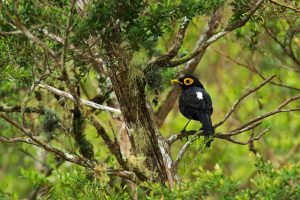MONTREAL — A new conservation deal adopted this week at the United Nations (UN) summit in Montreal puts the world on a strong track to halt the rapid decline in nature — but only if wealthy nations deliver enough funding and all countries prioritize conservation.
Goals set out in the agreement, known as the Kunming-Montreal Global Biodiversity Framework, include halting species extinctions, conserving 30% of the world’s land and sea by 2030, and mobilizing $200 billion per year for conservation.
Conservationists praised the deal’s ambition, saying it amounted to a Paris Agreement for nature in setting out 23 specific targets against which countries can measure their progress.
“This is equivalent to the 1.5 degrees Celsius global goal for climate,” said Marco Lambertini, director-general of World Wildlife Fund International.
Just setting the targets took four years of negotiations, culminating in this month’s “COP15” summit in Montreal, during which countries weighed nature considerations against other pressures like economic development and industry competition.
At stake is nothing short of the survival of hundreds of thousands of species, with the UN saying there are now about 1 million threatened with extinction.
But delivering on the 23 targets will be much harder, conservation experts told Reuters, requiring strong political will and a willingness to sacrifice some of the world’s most prime real estate to nature.
“What really matters is how these goals and targets are translated into national plans,” said Nick Isaac, a macroecologist at the UK Centre for Ecology and Hydrology.
For developing countries, it will also depend on getting much-needed funding to incentivize conservation and pay for its costs.
“The key will be on developed countries delivering early on finance commitments,” a negotiator from a Latin American country said.
POSSIBLE ROADBLOCKS
While the deal includes the ambitious target of protecting 30% of land and seas by 2030, the results will depend on which areas are chosen for conservation — and what exactly counts as protection.
Neither is strictly defined in the agreement, leaving it up to countries to decide how ambitious they will be.
Scientists and conservation groups have urged countries to protect species-rich land and sea areas. The trouble is, these are the same areas that most people prefer to live and work — with temperate weather and plenty of water and greenery available.
“The choice of which regions to protect … must be based on the best available data and methodology,” said Alexandre Antonelli, director of science at Britain’s Royal Botanic Gardens, Kew. “Otherwise, there is a big risk that the cheapest areas are protected rather than those that matter most for biodiversity.”
What countries consider as protected also matters, experts say.
During the talks, delegates discussed whether protected areas should be entirely off-limits to human settlement and development, or if some resource extraction should be allowed if managed sustainably. The deal left the question unsettled.
Some countries have already started carving out areas to protect.
China has made nearly a third of its land off-limits to development. Canada, one of the world’s largest nations, is expanding protected land and marine areas in the Arctic.
Later this month, the US Congress is expected to pass legislation to deliver $1.4 billion in annual funding to U.S. states for conservation.
SHOW US THE MONEY
Throughout the two-week COP15 summit, ministers repeatedly insisted that any conservation ambition must be matched by cash.
Funding from developed countries ultimately came in significantly below the $100 billion per year that was asked for. Instead, the deal included a promise to allocate $200 billion per year by 2030 from the public and private sectors — including $30 billion from wealthy nations.
Without that money, poorer nations warned they would be unable to guarantee protection for nature within their borders.
“Safeguarding the Amazon, the Congo Basin Forests, peatlands, mangroves and reefs globally will require some major increases in funding,” said Brian O’Donnell, executive director of non-profit Campaign for Nature.
“Political leaders are just beginning to recognize how big a priority biodiversity should be on their agendas, and in their budgets,” he said.
At COP15, the three biggest rainforest nations — Brazil, Congo and Indonesia — worked together in the final hours to reach consensus on the deal. The three just last month had announced a new partnership to cooperate on forest preservation.
“Such an alliance holds great potential,” said Anders Haug Larsen of Rainforest Foundation Norway. “With the agreement giving priority to the most biodiversity-rich areas, implicitly rainforest protection will be at the core of its implementation.” — Reuters

